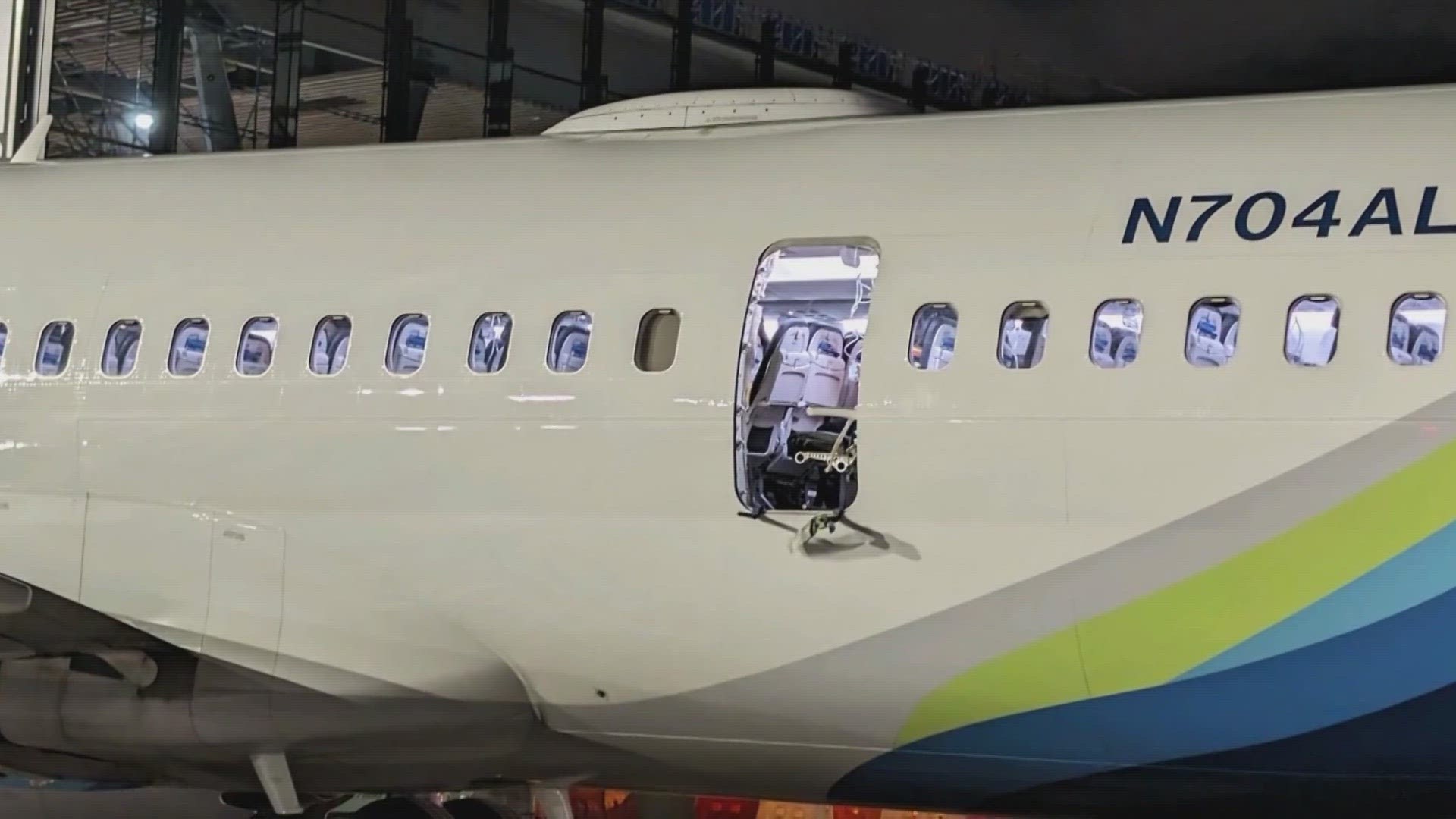SEATTLE — The National Transportation Safety Board (NTSB) released its preliminary report into what caused a door plug to detach from the fuselage of a Boeing 737 Max 9 jet at 16,000 feet, leaving a gaping hole in the plane.
The jet, operated by Alaska Airlines, was carrying 171 passengers at the time, making a short flight between Portland, Ore., and Ontario, Calif., on the evening of Jan. 5. The hole left by the door plug led to a rapid depressurization of the plane, injuring one flight attendant and seven passengers.
Records gathered over the course of the NTSB’s investigation indicate that four bolts that were intended to help secure the door plug to the plane were not reattached after the plug underwent repair work at Boeing’s Renton factory. The bolts keep the door plug from moving vertically.
The NTSB was able to recover the missing door plug that fell off the 737 Max 9 jet from an Oregon man’s backyard. Investigators documented “contact damage” on several parts of the door plug, consistent with the part moving upward, outward and toward the tail of the plane. However, the holes where the bolts were intended to be were largely “intact and undamaged.”
A Non-Conformance Record (NCR) generated at Boeing’s Renton factory documented a repair process in which the four bolts were removed to fix five damaged rivets on a section of the plane. Records show the repairs were made on Sept. 19, 2023 by Spirit AeroSystems personnel – employees of the company that manufactured the fuselage for Boeing.


Pictures obtained from Boeing show that the door plug was then closed without bolts in three locations visible in the photos. The picture was attached to a text message between Boeing team members on Sept. 19 discussing interior restoration of the fuselage after the rivet work was completed.
There is no evidence that the door plug was ever opened again after the repair work was completed on the plane.
Boeing issued a statement Tuesday afternoon in response to the NTSB’s preliminary report, saying they plan to cooperate fully with the NTSB and Federal Aviation Administration’s investigations into the incident and accepting responsibility for the incident.
“Whatever final conclusions are reached, Boeing is accountable for what happened,” Boeing President CEO David Calhoun said. “An event like this must not happen on an airplane that leaves our factory. We simply must do better for our customers and their passengers. We are implementing a comprehensive plan to strengthen quality and the confidence of our stakeholders. It will take significant, demonstrated action and transparency at every turn – and that is where we are squarely focused.”
The company said it has implemented a control plan to ensure that all 737 Max 9 door plugs are installed according to specifications and that they are implementing plans to improve quality across all 737 manufacturing operations. The factories will also be open for customers, like Alaska Airlines and United Airlines, to do their own inspections of Boeing’s work.
Jimmy Anderson, an attorney with Krutch Lindell and an FAA-licensed pilot, said the purpose of a preliminary report is to advise the public as to the facts of an accident, how many people were on board, where and when it occurred, and other basic information.
"This preliminary report gives us a lot more information about what caused this aircraft incident than you would normally see from a preliminary report," Anderson said. "I think the preliminary report confirmed what we have been hearing, kind of from various sources, and that is that this plug was not properly secured."
Anderson said the NTSB is charged with determining probable cause, and that opinion from the agency will come out in a later report.

